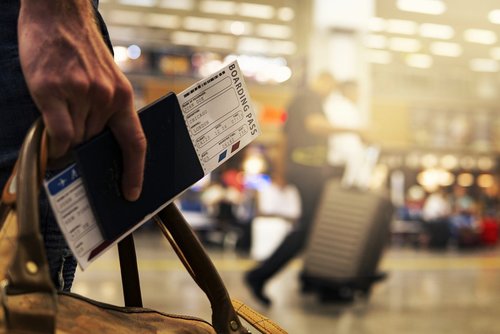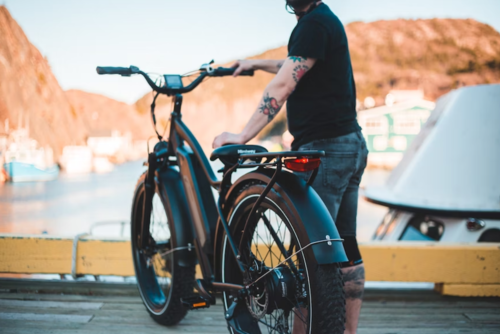Electric aviation solutions could solve this problem and have become an important area of research in recent decades. Aviation news sites are full of promising headlines about electric aviation technology, but does it live up to the hype?
This article will overview the state of electric planes, battery technology, and charging stations. We will also shed some light on safety concerns. With a complete picture of electric aviation technology, everyone can know what’s to come and whether this field is worth the trust and hype surrounding it.
Development of Electric Planes
Electric planes are the cornerstone of electric aviation technology. The development of drones or other unmanned aircraft is highly developed, but planes that can carry passengers and goods are the goal of most projects.
The first successful commercial flight happened with an electric plane happened in 2019. It was completed by Eviation Alice, which flew nine passengers for eight minutes at an altitude of 3,500 feet. Although it isn't a lot, the biggest achievement was that it was a near-zero emission flight.
Such success proved that electric planes are possible, and many manufacturers started the development of their own electric planes. Besides Eviation, many smaller startups joined the market. Zunum Aero, ZeroAvia, and Ampaire are two notable examples. Today, well-known names, such as Airbus and Boeing, are also developing electric planes.
If engineered well, electric planes can potentially not only have lower emissions but require less maintenance too. Since there are fewer mechanically moving parts, this could potentially cut a lot of repair costs for airlines.
However, perhaps the largest incentive to develop electric planes is the price of fuel. Since the covid-19 pandemic, the price of aviation fuel has only risen, and there are no signs of it ever going down.
The manufacturers face two major challenges. Firstly, they must increase the flight range since the first models, such as Eviation Alice, can only fly up to 650 miles on one charge.
Secondly, it is important to increase the charging rates. Most electric planes require at least 30 minutes of charging for an hour of flight time. Both of these problems stem from the need to develop battery technology.
Battery Technology
Lithium-ion is the most widely used battery in electric planes. They are relatively lightweight and have a high energy density. However, these batteries tend to degrade after a set amount of recharge cycles. They can also become flammable in high temperatures. That's why some other types of batteries are currently being developed.
Solid-state batteries use a solid electrolyte instead of a liquid or a gel, as in Lithium-ion batteries. That's why they are less likely to start a fire, are faster to charge, and can store more energy in the same amount of space.
Another in-development battery for electric planes is the Flow battery. They use liquid electrolytes that are stored in separate tanks and are pumped when energy is needed. They have a longer life cycle and can take less space than Lithium-ion batteries.
However, both of these battery types are still under development and are not used for commercial flights. They might replace Lithium-ion batteries in the long term, but as far as Lithium is affordable, it will dominate the electric planes market. The main reason for this is the charging infrastructure.
Charging Infrastructure
While electric cars have some charging station standards already emerging, the same cannot be said about electric planes. They have larger batteries, which require more electrical infrastructure with higher voltage.
Airports are already crowded, with people and facilities consuming a lot of energy. Some airports do not have strong enough energy outlets to support electric planes. However, there are companies that try to solve these issues. The two main ones are ChargePoint and EVBox.
Although the technology for electric planes is still in development, ChargePoint has created a range of high-power DC fast chargers that could be used for electric planes. One of their models can provide up to 350 kW of power, enough to charge an electric car in thirty minutes, and could charge Eviation Alice in about four hours.
There are stronger chargers, but they would put a strain on the airport's electrical system. EVBox, a European-based company, develops solar-powered charging stations for electric planes and cars. Such solutions would not only lower the emissions of electric planes further but would also help to balance the energy loads for airports.
Safety of Electric Aviation
Currently, there are no electric planes without batteries. If electric planes will be used commercially, these batteries will need to be charged quickly. Lithium-ion batteries are especially vulnerable to this. They heat up when charged and might catch fire at high temperatures.
Most electric plane manufacturers include fire suppression and thermal management systems to prevent possible incidents. Certain implementations of these systems might lower the lifespan of the batteries, so standards for their use are still needed to implement by regulators.
Further safety concerns include various scenarios when the battery can be damaged and cause fire on the plane. One such incident happened when the Siemens-FlyEco Magnus eFusion plane crashed in a field in Hungary in May of 2018.
It was an early prototype that allowed Siemens to test high-power-density electric motors. Likely, the crash happened because the batteries were damaged or the engine required too much energy. Unfortunately, this incident resulted in the deaths of both the pilot and co-pilot deaths.
Overall, incidents with electric planes are extremely rare, and there haven’t been any passenger casualties. If electric aviation technology is developed with safety in mind, it might be even safer than traditional flights.
Future of Electric Use in the Aviation Industry
Although the electric aviation industry is still in its early stages, it is growing rapidly. The field is not without challenges, but they are not without solutions. The companies investing in electric aviation today are likely to succeed and will certainly become more eco-friendly in the future.








